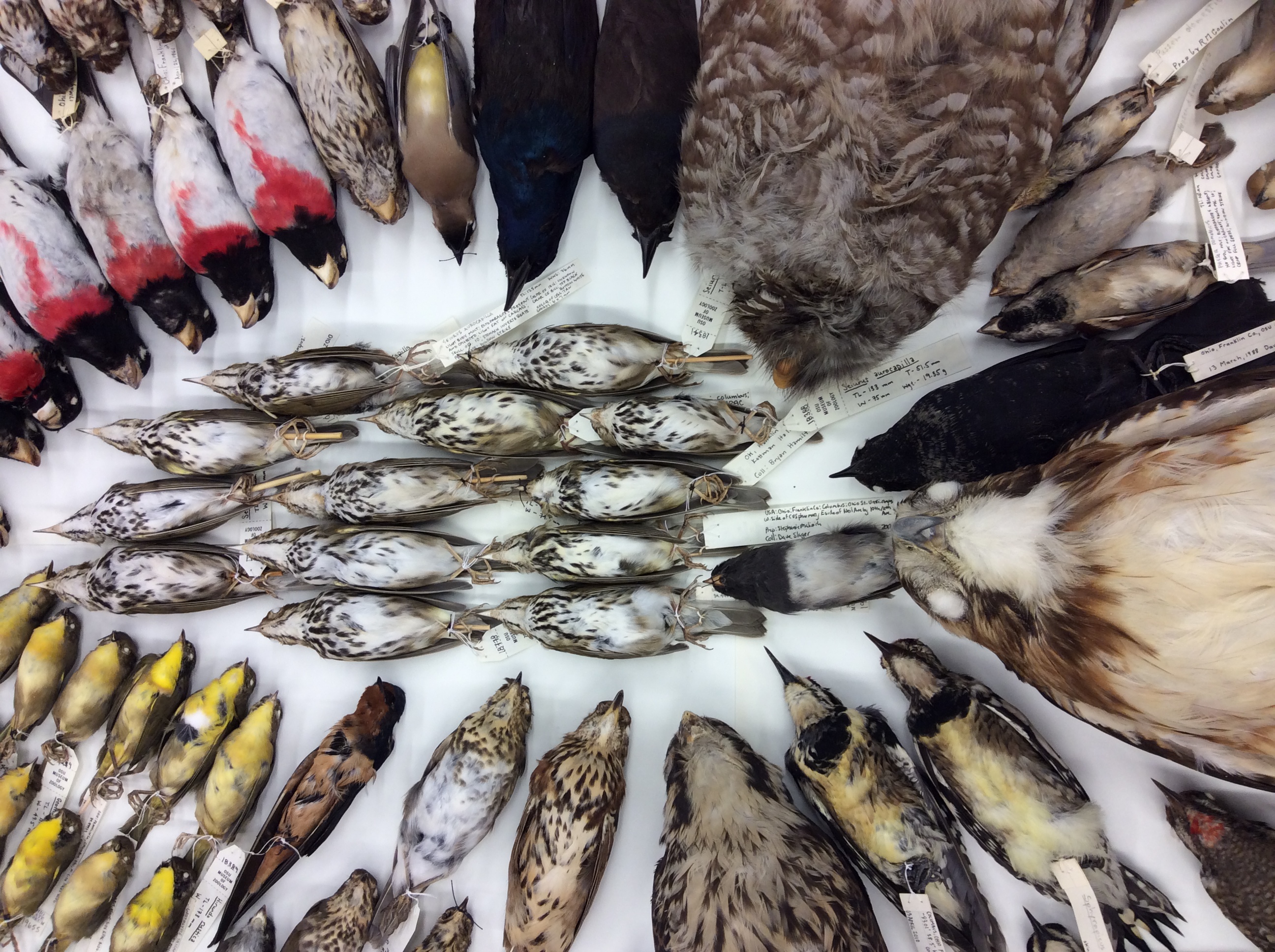When choosing a species for the month of December, an obvious choice came to mind: Reindeer. However, writing about the Reindeer would be supporting a Christmas cliché and not everyone celebrates the holidays in the same way. So I decided to choose an animal that better represents the advent of winter and the calming beauty that this time of the year brings.
With a wingspan of about five feet, the Snowy Owl (Bubo scandiacus) is a beautiful and iconic bird that is not often seen around Ohio. During the summer, they can only be found above the Arctic Circle where they hunt prey such as ptarmigan, waterfowl, and lemmings. The only time you are likely to see one of these owls is during the winter when they often move south to northern states of the U.S. such as Ohio, New York, and Colorado. We have a few Snowy Owl specimens here in the museum, all of which have been collected in Ohio. Among them is the almost famous Snowy Owl from Hardin County in 2012. You may have seen this owl yourself since it stayed in place for several weeks or read about it in the Columbus Dispatch.

One of the mounted Snowy Owls from our collection
Unlike most owls, Snowys, as birders lovingly refer to them, are diurnal (meaning that they’re active during the day. The Arctic Circle has 24-hour sunlight during the summer, and these birds have adapted to such conditions. Because these owls live in very cold temperatures, they have developed a bulky body with dense feathering especially on their legs; thus, these birds are the heaviest owls in North America. Unlike most owl species, Snowy Owls nest on the ground and have a tendency to sit in one place for hours on end to the point where they can become invisible against a snowy backdrop. Male Snowy Owls have a very unique courtship that involves flapping their wings in a “V” formation, and dropping a prey item in front of the female for her consumption. While they appear to be peaceful and calm, Snowy Owls will vigorously defend their territory against other species and some individuals have even been recorded attacking Arctic Wolves. To learn more about an owl’s biology one can search for pellets that these birds regurgitate which contain leftovers of the last meal, such as bones, hair and teeth. Learn more about dissecting owl pellets through this video. If you’d like to learn more general facts about Snowy Owls, feel free to visit the Cornell Lab of Ornithology’s page on them.

As you can see, Snowy Owls have feet that have a thick covering of feathers to help shield them from very cold temperatures
One of the Snowy Owl’s more remarkable feats is that it has been recorded to be able to hunt up to 1,600 lemmings in a single year. In an environment as barren as the Arctic Tundra, one would think that at this rate of hunting, the lemming population would be seriously affected. Yet scientists have never been able to conclusively prove the link between heavy predation of aerial predators such as the Snowy Owl, and the lemmings’ population fluctuation. However, a recent study by Therrien et. al (2014) shows, for the first time, that relentless predation by aerial predators can play an important role in the cyclic depression in lemming population during the warmer periods on the tundra. The study also found that breeding populations of arctic avian predators increased vastly as a result of high lemming population densities. And it is in those years of abundance that young Snowy Owls often move far south in search of food. This fall Snowy Owls have already been sighted as far south as Illinois.
Whether you celebrate any of the winter holidays or enjoy the oncoming winter, the Snowy Owl is a beautiful bird whose presence can add to the spirit of the season and the tranquility this time of year brings.
From all of us at the Tetrapod Collection, we wish you a very Happy Holiday Season!
References
Decker, Theodore. “Snowy Owl on ‘Dispatch’ Front Page Found Dead.” Columbus Dispatch 13 Jan. 2012
“Snowy Owl.”, Life History, All About Birds. https://www.allaboutbirds.org/guide/Snowy_Owl/lifehistory
Therrien, J. F., Gauthier G., Korpimaki E. 2014 Predation Pressure by Avian Predators Suggests Summer Limitation of Small-mammal Populations in the Canadian Arctic. Ecology 95, 56-67. http://www.esajournals.org/doi/abs/10.1890/13-0458.1
